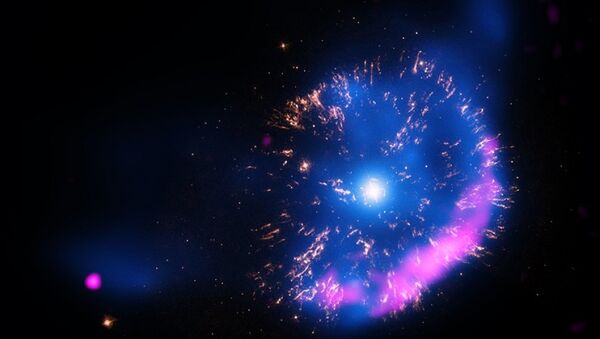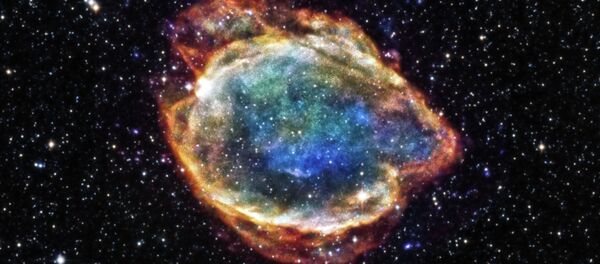The GK Persei nova appeared as one of the brightest stars in the night sky more than a century ago, on February 23, 1901. Its remnant, first observed a year later, is known as the Firework nebula.
Latest Chandra release! "Mini Supernova" Explosion Could Have Big Impact http://t.co/nOrxugOzoj #NASA #astronomy pic.twitter.com/a2lnTYaJjy
— Chandra Observatory (@chandraxray) 16 Март 2015
The sensational event, visible to the naked eye, took place some 1500 light years away from the Earth in the constellation of Perseus. It became known as a classical nova, or a thermonuclear explosion occurring on the surface of a white dwarf accompanied by another star.
A stellar eruption of this type is a miniature version of a supernova, an extremely luminous explosion that annihilates a star in a spectacular fashion. Some of these explosions are so bright they outshine the galaxy where the blast takes place.
For instance, the changes in the amount of the X-ray luminosity and temperature during the last decade suggest that GK Persei blast wave is currently expanding into a region of much lower density. This data provides clues to the environment around the nova.
Novae are a prime target for research since they occur more often than supernovae. Moreover, novae remnants evolve faster than those of supernovae.


